Thanks for this help. I changed it in the above topic - OK - driect translation from the German "Kreuzkopf Führung"artemis wrote:Crosshead Guide
First core box
- Rainer
- Full Steam Ahead

- Posts: 306
- Joined: Sun Nov 22, 2009 5:42 pm
- Boat Name: Emma and Molly
- Location: Hannover, Germany
- Contact:
Re: LP Piston and valve slide
Rainer
www.steamboating.de
www.steamboating.de
- Rainer
- Full Steam Ahead

- Posts: 306
- Joined: Sun Nov 22, 2009 5:42 pm
- Boat Name: Emma and Molly
- Location: Hannover, Germany
- Contact:
First cylinder
Today I got the message that the first cylinder block came out of the sand very well.
No pictures now ...
They will poore a second one tomorrow - so I will collect the cylinders at Friday and show some pictures here - I promise!
No pictures now ...
They will poore a second one tomorrow - so I will collect the cylinders at Friday and show some pictures here - I promise!
Rainer
www.steamboating.de
www.steamboating.de
- DetroiTug
- Full Steam Ahead

- Posts: 1863
- Joined: Fri Nov 27, 2009 5:56 pm
- Boat Name: Iron Chief
- Location: Northwest Detroit
Re: First core bockes
Rainer, We are all looking forward to it. Thanks for sharing your project with us. I am learning quite a bit from it.
-Ron
-Ron
-
Albert
- Steam on Deck

- Posts: 46
- Joined: Sat Sep 22, 2012 12:32 pm
- Boat Name: Min Deern
- Location: Kiel - Germany
Re: First core bockes
Hi Rainer, too bad I have to fly down to Spain and stay there until the 3rd. of October. Waiting to see your pictures is gona be kind of hard. What about sending me just one to my cell phone?
Albert
Albert
- Rainer
- Full Steam Ahead

- Posts: 306
- Joined: Sun Nov 22, 2009 5:42 pm
- Boat Name: Emma and Molly
- Location: Hannover, Germany
- Contact:
 ready
ready
The foundry has send some pictures.
Without words





The part is only sandblasted now.
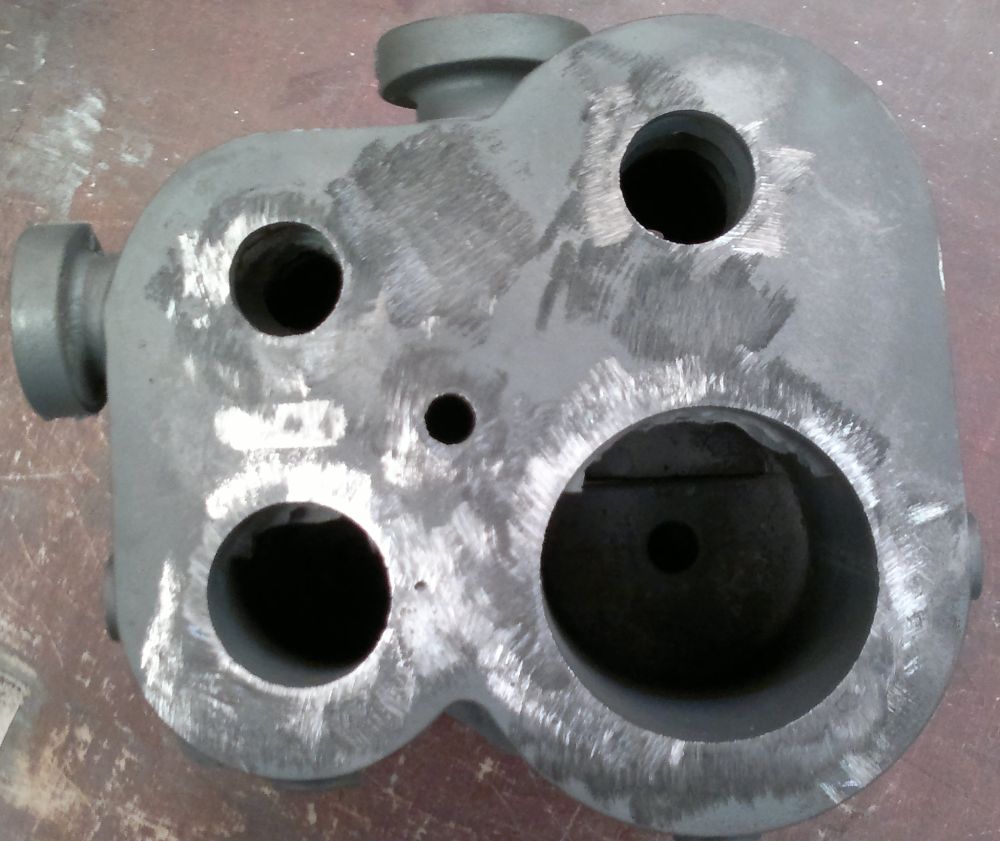
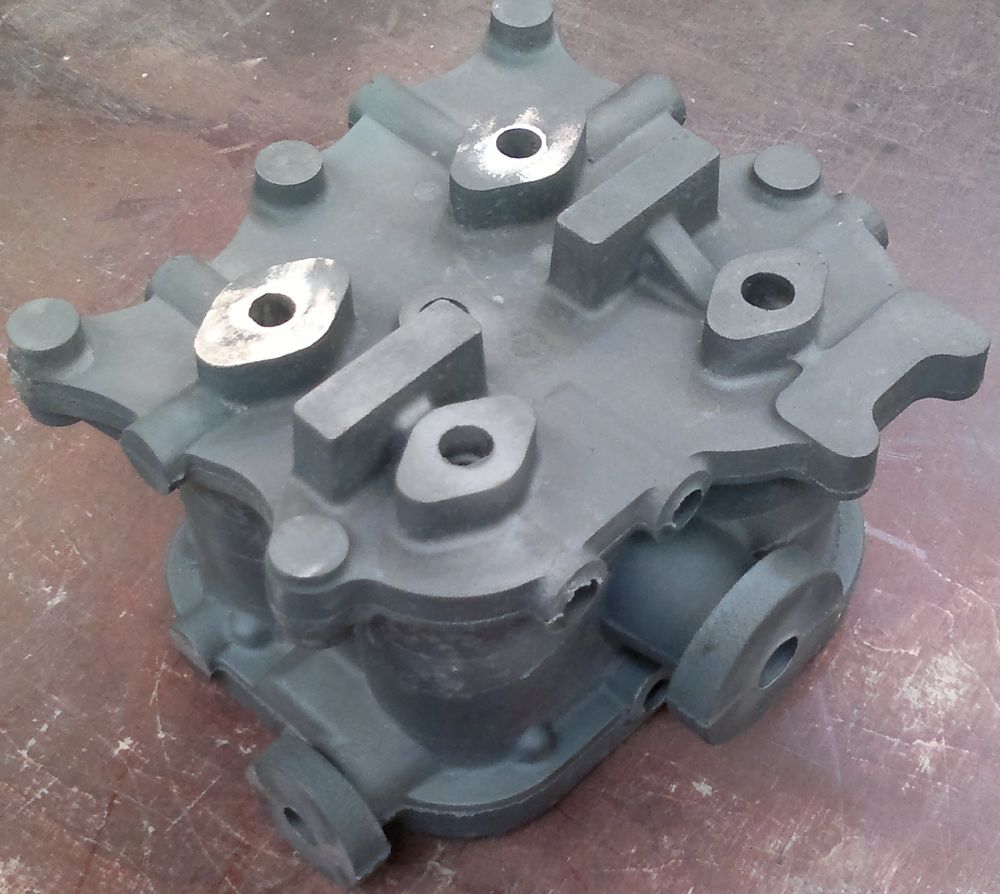
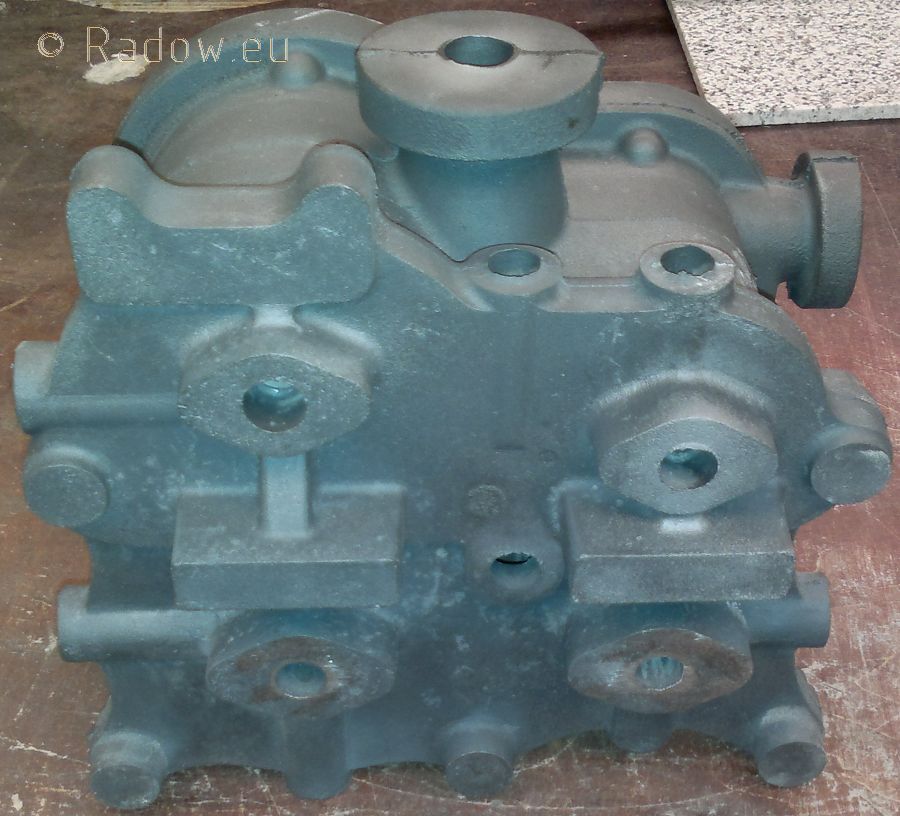
Inside view of the HP cylinder. The ports will be accesible when the cylinder is machined
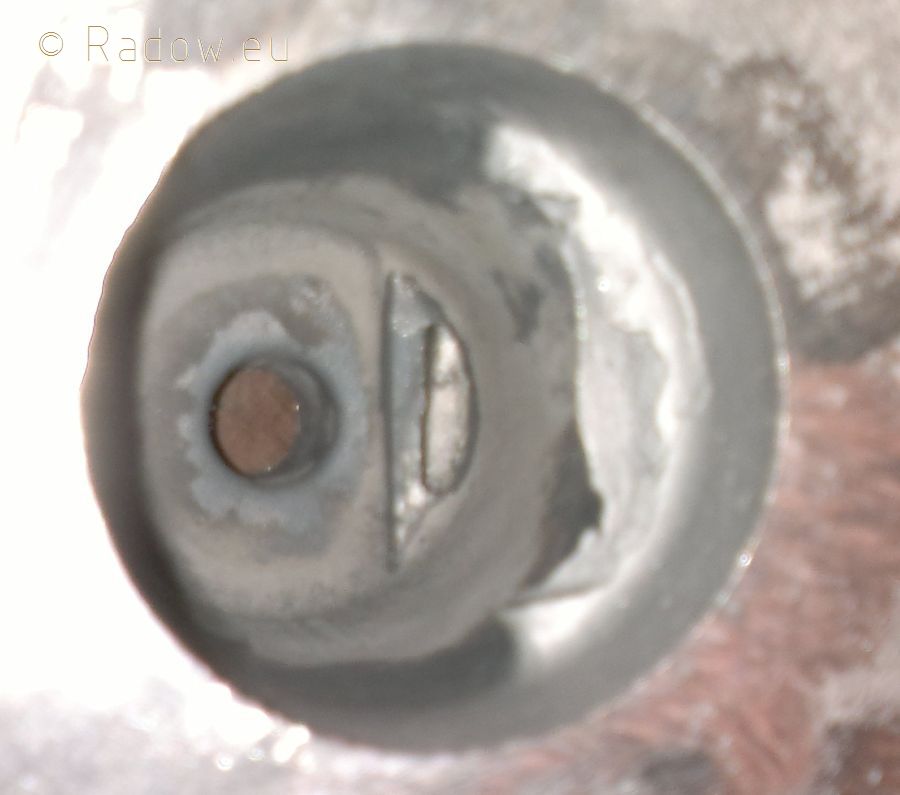
Without words
The part is only sandblasted now.



Inside view of the HP cylinder. The ports will be accesible when the cylinder is machined

Rainer
www.steamboating.de
www.steamboating.de
- Rainer
- Full Steam Ahead

- Posts: 306
- Joined: Sun Nov 22, 2009 5:42 pm
- Boat Name: Emma and Molly
- Location: Hannover, Germany
- Contact:
Flash
Having a look at the cores you could imagine where the flash in the cylinder comes from. This is to give the sand cores the possibility to move a little instead of breaking... The possible movement is limited to a value which is allowable for the function.
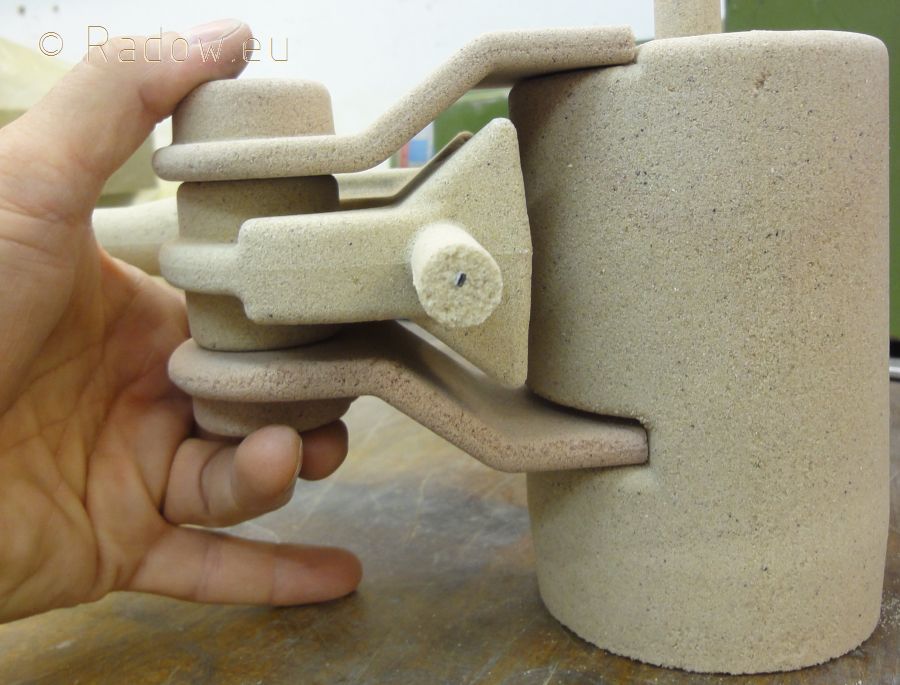

Rainer
www.steamboating.de
www.steamboating.de
-
Mike Rometer
- Full Steam Ahead

- Posts: 936
- Joined: Sat Aug 13, 2011 6:41 pm
- Boat Name: B.N.Y.S.
- Location: Middle Earth
Re: First core bockes
Super. You will have a great time machining that. Will you 'rest' the casting after the first cuts?
Retirement is about doing what floats your boat!
A BODGE : - A Bit Of Damn Good Engineering.
A BODGE : - A Bit Of Damn Good Engineering.
- Rainer
- Full Steam Ahead

- Posts: 306
- Joined: Sun Nov 22, 2009 5:42 pm
- Boat Name: Emma and Molly
- Location: Hannover, Germany
- Contact:
'rest' the casting
Like a good lathe bed in former times - 10 years?Mike Rometer wrote:Will you 'rest' the casting after the first cuts?
Or taking it by horse cart over cobble stone pavement some hours?
Joking apart, what's your suggestion?
Rainer
www.steamboating.de
www.steamboating.de
- fredrosse
- Full Steam Ahead

- Posts: 1925
- Joined: Fri Nov 20, 2009 5:34 am
- Boat Name: Margaret S.
- Location: Phila PA USA
- Contact:
Re: First core bockes
Your casting is very nice, modern technology and your skills have indeed produced a piece that is very impressive.
Stress relief, heating a casting or welded assembly very slowly up to a high temperature, and then cooling it very slowly is necessary to avoid distortions during machining. As part of the stressed metal is cut away during machining, the internal loads change, so the piece shape continuously changes as you machine it. Stress relieving "relaxes" the metal, so there are no remaining internal stresses, and as it is machined there is no changing internal loads, so the dimensions remain correct.
It is common practice to stress relieve many metals, however cast iron has its own set of problems. Heating an iron casting to a high temperature can usually change the iron structure/character, and ruin the piece due to very large hardness change. An old time method of "relaxing" an iron casting is to let it "self relieve", this process works, but is much much slower than thermal stress relieving. Castings were placed in storage for several months, or even years, before machining is started. Vibration of the cold casting speeds up the "self relaxing" process, hence the travel over a cobblestone road in a horse cart with steel wheel rims.
One method of avoiding internal stresses in cast iron pieces is to provide uniform temperature cool down of the iron in the mold, which must be accomplished at the foundry. Depending on the actual grade of cast iron in your casting, and the treatment of the casting, you probably would not need stress relief for your cylinder assembly, but perhaps you should discuss this with an engineer at the foundry to determine if there is usually anything done for stress relief on your alloy.
You probably already know all of this, but I hope there is something useful here.
Stress relief, heating a casting or welded assembly very slowly up to a high temperature, and then cooling it very slowly is necessary to avoid distortions during machining. As part of the stressed metal is cut away during machining, the internal loads change, so the piece shape continuously changes as you machine it. Stress relieving "relaxes" the metal, so there are no remaining internal stresses, and as it is machined there is no changing internal loads, so the dimensions remain correct.
It is common practice to stress relieve many metals, however cast iron has its own set of problems. Heating an iron casting to a high temperature can usually change the iron structure/character, and ruin the piece due to very large hardness change. An old time method of "relaxing" an iron casting is to let it "self relieve", this process works, but is much much slower than thermal stress relieving. Castings were placed in storage for several months, or even years, before machining is started. Vibration of the cold casting speeds up the "self relaxing" process, hence the travel over a cobblestone road in a horse cart with steel wheel rims.
One method of avoiding internal stresses in cast iron pieces is to provide uniform temperature cool down of the iron in the mold, which must be accomplished at the foundry. Depending on the actual grade of cast iron in your casting, and the treatment of the casting, you probably would not need stress relief for your cylinder assembly, but perhaps you should discuss this with an engineer at the foundry to determine if there is usually anything done for stress relief on your alloy.
You probably already know all of this, but I hope there is something useful here.
-
Mike Rometer
- Full Steam Ahead

- Posts: 936
- Joined: Sat Aug 13, 2011 6:41 pm
- Boat Name: B.N.Y.S.
- Location: Middle Earth
Re: 'rest' the casting
Not sure to be honest, it would probably depend largely on the thickness of the iron and would the shape build any stresses from casting, particularly when cooling. When I machined my Tool and Cutter grinder beds I left them for a month. I know casting methods and machining accuracies are vastly improved on the past, British Leyland used to leave their cylinder blocks for 3 months, outside in the weather. If you can be patient; then for as long as you can bear it, perhaps. It might not be a problem anyway.Rainer wrote:Like a good lathe bed in former times - 10 years?Mike Rometer wrote:Will you 'rest' the casting after the first cuts?
Or taking it by horse cart over cobble stone pavement some hours?
Joking apart, what's your suggestion?
Retirement is about doing what floats your boat!
A BODGE : - A Bit Of Damn Good Engineering.
A BODGE : - A Bit Of Damn Good Engineering.